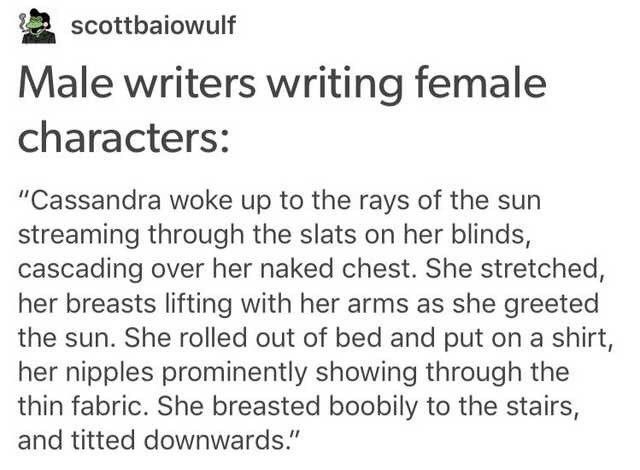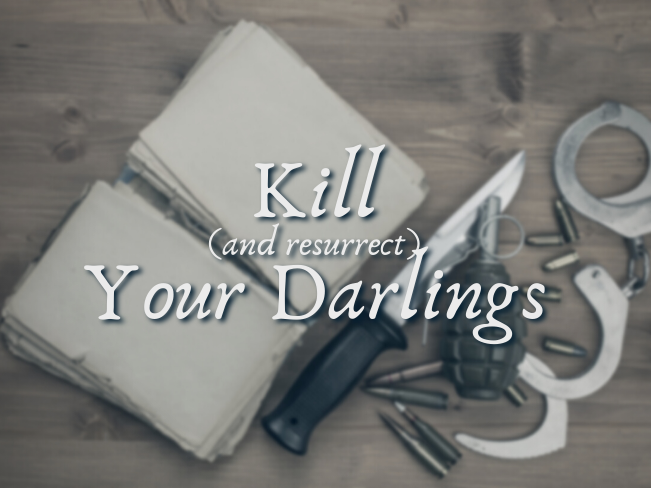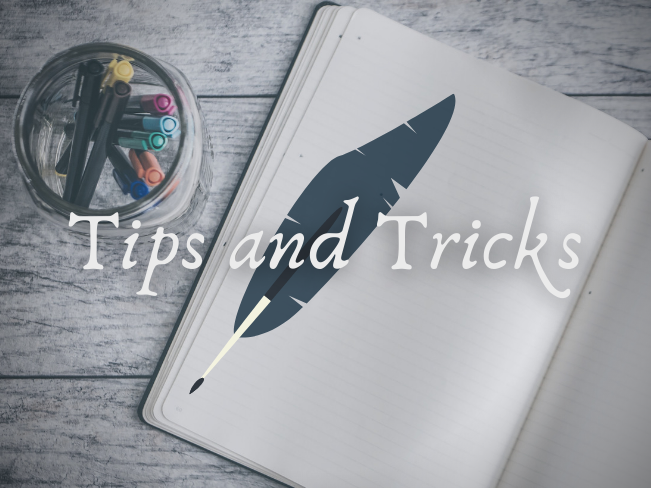
What makes a Romance?
There’s a difference between a story with romantic elements and a capital-R Romance. In Romance, the romantic arc finishes with a default happily-ever-after (HEA) or happily-for-now (HFN) ending. The HEA isn’t the only required element of a Romance, but it’s among the most important. These elements are part of a Romance’s DNA, and must be there in order for the story to fulfil the promises made to the reader when they pick up the book.
A romantic story can be a love story, but it doesn’t need to have a HEA, nor does it need to include all of the classic elements of a Romance. That gives the writer more flexibility, but also means they can’t bill their story as a capital-R Romance without making a false promise to the reader.
While these ironclad conventions can be found in just about every genre, Romance’s obligate HEA makes it a particularly difficult genre to write. Why? Because readers know how the book is going to end. If readers know the ending, how can it be exciting and compelling?
That’s the unique difficulty faced by Romance writers.
Romance is in the journey
Romance doesn’t spring from a vacuum. The romantic plotline must be tied:
1. to the character’s internal growth arc (ie: how they become a better person throughout the course of the book), and
2. to the external conflict (ie: your protagonist’s quest to defeat the Big Bad Werewolf. Or whatever).
If the romantic arc doesn’t have that depth, it’s going to lack power. Readers won’t connect with the relationship. They won’t see how it’s essential for those characters to end up together, and thus, they won’t ‘ship’ it.
We need our readers to fall in love not just with the romantic arc, but with our external plot, our world, and our characters. Only then will they begin to root for that happy ending.
The journey of the plot
Part of the lure of Romance is in the drama: in Love Overcoming the Forces of Evil (or, at least, love overcoming a super thorny obstacle). Not necessarily love itself, mind, but the characters who are in love. By the end of the book, each character must choose to put their partner and relationship first. They face the Big Bad together as a unit – and together, they can’t lose.
Naturally, this unity can’t come too easily or you won’t have a plot. Every good Romance needs repelling forces – something that pushes the couple apart.
This is what makes Romance interesting even though readers know the HEA is just around the corner. Romance isn’t about the surprise of the ending – it’s about how the writer builds up to and delivers the ending. That journey only becomes interesting when the reader can’t imagine how the characters are going to make it to the HEA.
There’s a saying about three-act (and most classic Romances are three-act): first, you get your character in a tree. Then, you throw rocks at the tree. Finally, you have to figure out how to get them out of the tree. This is the crux of a good Romance: the tree has to be so high, and the rocks so heavy, that your reader can’t see how your character can possibly win. When it all comes together in the end, though, it’s incredibly satisfying.
Readers know the answer. The hook is all about how we lead them to it – and how good we are at getting them to root for the happy ending they know is coming.
The secret to a good HEA? Building attracting forces.
The journey of the characters
If we do a good job of character building, we’ll end up with a pair of puzzle pieces: two characters who uniquely complement one another. When they’re in their healthiest, most functional state, they push one another to grow positively towards the end of their character arc. This growth allows them to solve the external plot problem (and defeat the Big Bad) in a creative way.
That positive growth is a huge attracting force.
In a classic Romance, both MCs are POV characters. One of the two is always the primary protagonist. This character tends to be easier to flesh out. They start the story, they carry the primary growth arc, they drive the plot forward. It’s harder to create the love interest, though – even when we get the chance to dip into their head.
If we make our love interest (LI) as dynamic as the protag and successfully tie their arc to both the relationship conflict and the external conflict, we’ll end up with a compelling duo. These characters solve their problems by growing together, making it clear they’re better as a couple than they are apart. That’s half the battle to hook the reader won.
Yet there are plenty of Romances – and romantic stories – that fall well short of the mark.
Why?
Well, usually because the love interest has a personality as compelling as wet cardboard.
Where do wet-cardboard love interests come from?
The biggest mistake we can write when crafting a Romance is to create a love interest that exists only to fill a hole in the protagonist’s life. This lends itself to lazy writing – to falling back on shorthand and stereotypes in order to build a certain “kind” of character instead of a fully-realized person.
These stereotypes are the bane of every romance writer’s existence. They’re old, they’re stale, and they ruin our stories.

In romantic fiction, the wet-cardboard character stems, all too often, from what I call the “I can’t write men/women” problem.
For the past few weeks, I’ve listened to the Writing Excuses podcast while going for my afternoon walks. I started with the oldest episodes and am working my way forward in time, so take all of this with a grain of salt, because I believe the episode I’m about to mention is from 2009.
In it, the WE guys chat about writing Romance. Brandon Sanderson (who is, IMO, a great Fantasy author), mentioned that he wasn’t good at writing female protagonists. I pulled up short as I was walking to hear his advice to listeners:
In order to write good female characters, one must ensure they’re fully fleshed-out people with their own independent arcs.
This was lauded as Pretty Darn Good advice from the other guys on the podcast. In the most general way, yes – side-characters should always feel like the heroes of their own story. But the message I heard was this: I have trouble with female protagonists because it’s hard for me to write women as full fleshed-out people.
::deep breaths::
Again, remember – this is from 2009. A lot has changed in ten years.
Some things, though, remain the same. Men still get flack for writing women badly. Women, too, get flack for writing ‘unrealistic’ male characters (particularly in the Romance genre). As more time passes and the artifice of binary gender constructs becomes more apparent to the collective Western consciousness (–hi, yes, I’m queer – welcome to the blog–), this “men writing women badly, women writing men badly” problem becomes increasingly absurd.
Why is this so difficult? Why do people keep getting it wrong?
Because sometimes, we struggle to see beyond identity to the human being underneath.
If you let misogynistic/racist/homophobic/transphobic/ableist/ageist bias prevent you from seeing your character as a fully realized human being because of their identity, you’re going to end up with a half-baked stereotype instead of a compelling character.
We all have biases. We are all flawed humans raised in a flawed society. It is an exercise in empathy to see people who are different from us as complete, complex human beings. This goes doubly true when we’re talking about characters who aren’t the white/cis/hetero/male majority.
Minority characters have been relegated to reductive side-show roles for so long it’s difficult to bring them into the limelight – even when we identify with those characters. We treat the Other like an NPC in a video game. Simple. Derivative. Boring.
Please understand: I’m not trying to argue that we’re all the same regardless of identity. We (as humans) have had different lives and different experiences. Many of those experiences are colored by our unique identities. Experiences inform a huge part of who we are.
Yet while identity influences the character, identity does not make the character. If we rely entirely on an identity and the stereotypes surrounding that identity to inform characterization, we’ll end up with a cardboard amalgamation of lazy writing.
The love interest will, therefore, become a NPC in the video game that is the MC’s life: a red-shirt the reader never attaches to and doesn’t care about. It is impossible to write a compelling romance this way.
Don’t write from gender.
That is my single biggest piece of advice. If someone asks “how do I write a man? How do I write a woman?” I answer: start with a character, add gender later.
Look, I write queer fiction, so gender is a wibbly concept for me anyway. I do this naturally. I don’t always know the gender identity of my protagonists and love interests going into a story. (Writing is fun this way – you should try it!) But if you do have a concrete idea of your character’s gender identity – cool. Fine. Put it in a box in your head and set it aside.
Now create a person. A human character. Don’t think about their gender. Don’t start from their gender. Every time you hear yourself saying “well, he’s a man, so—” just stop.
Write a human character, fully-fleshed out, with all the faults and foibles of a person. Only when you get to the point that this person starts to feel real do you go back and say “ok, well – she’s like X, so how would that impact her life?”
She’s bisexual. How would that impact her life and experiences? She’s Asian. How would that impact her life and experiences? She’s hyper-intelligent. She has a messed-up relationship with her mother. She’s a woman.
Given her backstory, personality, and the world she lives in, how would that impact her life and experiences?
Gender is a tool, not a determining factor. It’s a prop through which you can filter a subset of predetermined experiences for your character. It’s not a governing force in that character’s whole personhood.
Resist the desire to attribute patterns of thought and action to gender.
“She’s obsessing over the possibility of a future relationship because she’s a woman.” NO. Stop. She’s obsessing because she’s the kind of person who obsesses. Because she’s an anxious thinker. Because she also obsesses about what her boss thinks, whether she did well in that meeting, whether she did something to offend the stranger who looked at her funny on the subway.
And if she isn’t an obsessive thinker – then why the heck is she obsessing over a possibility of a future relationship? Because that’s “what women do”? No, friend. That’s where we cross the line from behavioral justification to stereotype.
It’s the literary equivalent of saying a character likes pink, fashion, and painting her nails “because she’s a woman.”
We fall back upon these stereotypes – especially when we write other genders – because we’re told our whole lives that “men/women/NB folks are alien creatures we can never hope to understand.” Lack of empathy is lazy writing. It’s lazy living. If we do the work of figuring out who our characters are beyond the veneer of gender/race/sexual orientation/etc., we won’t need to rely on stereotypes to determine how they’d act or react in a given situation.
The question is never “well, what would a man do in this situation?” The question is: “well, what would Darius, the character I created with my brain, do in this situation?”
Writing from stereotypes is what not to do. It’s how to sink a romantic ‘ship before it sets sail.
So how do we write a convincing romantic partnership?
Character driven romance
If escaping tropey stereotypes is a struggle of yours (or if you’ve ever said “I’m not good at writing X gender”), here’s your road map:
- Come up with two fully fleshed-out characters. Make one a romantic and one a realist. One a fly-by-the-seat-of-the-pants type and one an overthinker. One an introvert and one an extravert. (And so on, and so on.) Don’t let gender determine which is which, because wtf does gender have to do with introversion? C’mon.
- Give your characters heart. Give them unique backstories. Make their actions, reactions, and emotions internally consistent with their lived experiences. Figure out how to fit them together like two puzzle pieces who are stronger when working with one another than they are when they’re apart. What, besides physical attraction, pulls them together?
- Determine their character growth arcs, and tie them to the external plot.
- Create a relationship growth arc that also ties to the external plot.
Now figure out their genders.
If you’ve done a good job of developing your characters, weaving their arcs, and connecting them to the plot, you’ll end up with ‘real’ characters who can and will generate authentic romantic tension on the page. They’re primed to fall in love with one another from that very first meet-cute. It’s crystal clear why they can and should be together.
Most importantly, you’ve created characters the readers can fall in love with, too. This is the backbone of a Romance. It’s heckin’ hard to write, but completely worth it in the end. Creating a rich, romantic emotional experience for the reader is a truly magical skill.
It rests entirely on characterization work. We want to create people, not NPCs. We must let our characters’ identities inform but not define how we write them.
(And for the love of god, let’s stop sending our women off to breast boobily to the stairs.)
 Worldbuilder’s Disease: Devil’s in the Detail
Worldbuilder’s Disease: Devil’s in the Detail Killing Darlings
Killing Darlings Epithets in Fiction
Epithets in Fiction
The way you put everything in perspective is great!
The “I can’t write so-and-so character” thing just promotes lazily written characters who aren’t interesting and have no purpose except to kiss the MC. It’s disappointing
Thanks so much, Slimm! The “I can’t write so-and-so” is a huge pet peeve of mine (you may have been able to tell XD) and I really hope that attitude starts to die out over the next few years. Diversity in fiction and publishing is getting better bit-by-bit, so I have hope!
While I’ve never struggled with writing characters that were more than stereotypes, I did start to doubt myself a few years ago if my men were realistic men because I read comments that “all men are/do x” and my boys/men weren’t like that. But this has reassured me that I can just keep writing the characters I want and there’ll be people that can recognise themselves in them, regardless of gender (or other identity markers).
I do think there are certainly ways that gender, sexuality, age, etc. inform our behavior (especially because we’re socialized to act certain ways!). But if that’s all our characters are, then they’re caricatures, not characters. Some readers are used to caricatures. That doesn’t make me want to reproduce that caricature for them. (Same goes for men or women written to be “not like other men/women” — then they’re caricatures of inverse stereotypes, know what I mean?)
If you write fully fleshed-out people, I’ll bet far more folks will see themselves in those characters than they would in an “all men do x” kind of character.
All of this was beautiful and I cheered at least twice—and grinned the whole way through! I feel like there ought to be a coda saying that you know you’re doing it right when the characters run away on you, start bantering off-script, and then cheerfully ransack your plot and write their own… but I suspect that is a relatable experience for anyone who’s had the delight of writing (or finding) a well-matched pair in one of their books!
Amen on everything you said about stereotypes, and I second your hope that the world is headed in a better direction. We and our books will all be better for it.
Hooray! ::throws confetti::.
In all seriousness though, I do understand how writing the ‘other’ can be intimidating for people. This is the answer I wish I had on hand when I used to crawl around on writing forums and see the “how do I write from a male POV?” come up over and over again. I used to ragequit the comments section because I didn’t have an articulate way to explain why the laundry list of “men think like this, not like that” answers were woefully unhelpful (and really, actively harmful despite the commenters’ best intentions).
Now I have a link I can drop, at least XD.